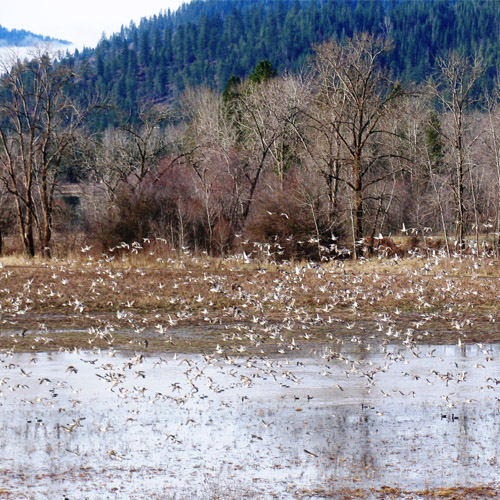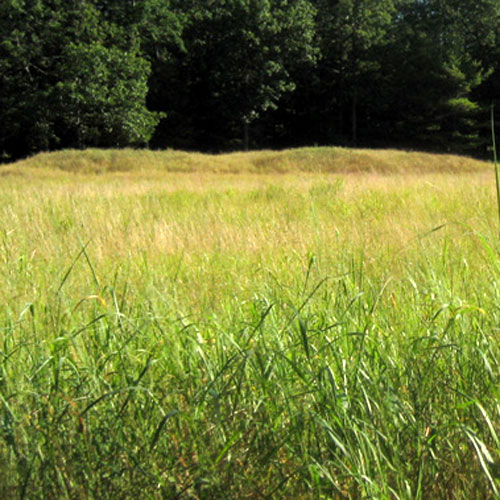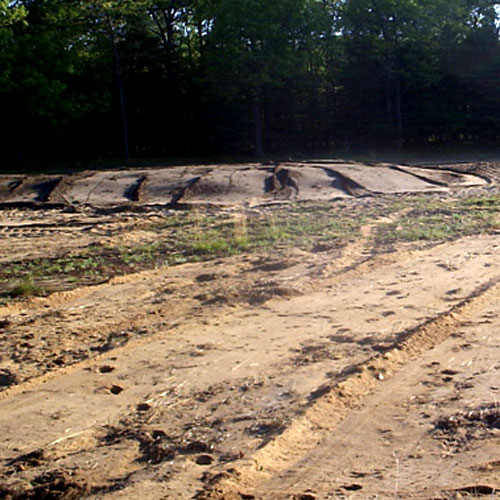
- Home
- EPA Presentations
- Principles for Ecological Land Reuse
- Soil Science
- Soil Amendments
- Terrestrial Carbon Sequestration
- Plants and Revegetation
- Growing Gardens in Urban Soils
- Ecosystem Services
- Creating Pollinator Habitats as Part of an Ecological Revitalization Project
- Act Locally
- Land Revitalization Assistance
- Case Study Profiles
- Publications, Resources, and Links
- Glossary of Ecological Land Reuse Terms

Podcast Discusses Economic Value of Trees
The latest episode of Resources Radio, a podcast by the nonprofit organization Resources for the Future, discusses a recent study that assesses the economic value of trees, based on how tree mortality shapes property values, air quality, wildfire risk, and more. The hosts also discuss an ongoing project, which uses photographs taken by British aircraft during the twentieth century to approximate modern satellite imagery and estimate how environmental resources in Africa have changed over time.
NYC Soil Testing Workshop and Wetlands Chat
New York City residents are invited to join the NYC Urban Soils Institute for a free Soil Testing Workshop and Wetlands Porch Chat at Governors Island on Saturday, June 26. Advance registration is not necessary. Residents can bring soil samples for heavy metals screening from 12:00pm - 4:00pm. Additional information on the workshop and chat is available on the Urban Soils Institute event page.
International Compost Awareness Week Virtual Event, May 3, 2021
The United States Composting Council chapters from Nebraska, Minnesota, California, and Colorado will co-sponsor a conversation about compost and the importance of advocating for healthy choice, featuring Finian Makepeace (Kiss the Ground) and Gary Gittere (North Carolina Composting Council). Webinar registration is free and available on the event registration form.
EPA's Brownfield Stakeholder Session, April 23, 2021
Nonprofits and community foundations are encouraged to register now for EPA's Brownfield Stakeholder Session scheduled for 1-3pm ET on April 23rd. During this online discussion, EPA hopes to learn more about nonprofit leadership in brownfields assessment, cleanup, and redevelopment in underserved communities.
The Natural Areas as Seeds for Restoration: The Arkansas Native Seed Program Webinar
The Natural Areas Association (NAA) will host a webinar titled Natural Areas as Seeds for Restoration: The Arkansas Native Seed Program. The Arkansas Native Seed Program, a collaborative effort of several state, federal, and private conservation partners led by the Arkansas Natural Heritage Commission, seeks to address issues surrounding the availability of locally sourced native plant seeds and plant materials for public and private revegetation and restoration projects in Arkansas. The program has convened ecologists and biologists to determine demand for seed, delineate appropriate seed zones, compile target species lists of high value species for collection, and identify appropriate plant community remnants from which to collect seed. The webinar will take place on August 18, 2020, from 12:00pm-1:00pm EDT. The event is free of charge and open to the public. For more registration and to register, please visit the NAA's event registration website.
National Academies to Study the Nation's Seed Supply
The National Academies of Sciences, Engineering, and Medicine (NASEM) are pleased to announce the appointment of the provisional committee for the new study An Assessment of Native Seed Needs and Capacities. The objective of this study is to plan and implement an assessment of federal, state, tribal, and private sector native seed needs and capacity to meet those needs. This effort will address the first two objectives under the National Seed Strategy for Rehabilitation and Restoration on a national level:
- Objective 1.1: Assess the Seed Needs of Federal Agencies and the Capacity of Private and Federal Producers.
- Objective 1.2: Assess Capacity and Needs of Tribes, States, Private Sector Seed Producers, Nurseries, and Other Partners.
Why restore disturbed or contaminated lands?
Habitat preservation is key to an ecosystem's health and well-being, and there is a growing awareness that restoration is essential to recover ecosystems that have been degraded or destroyed. Furthermore, contaminated or disturbed sites that have been restored are once again available for public use and enjoyment
The public's interest in the renewal of natural ecosystems has grown steadily during the past few decades. EPA's Superfund Redevelopment Program assists communities in returning some of the nation's worst hazardous waste sites to safe and productive uses. While the Agency works to protect human health and the environment, EPA also works with communities and other partners to consider future uses for restored Superfund sites. Many sites are now being used as parkland, agricultural land, residences and commercial space.
Ecological reuse can be incorporated into site remediation plans for Superfund sites because it provides habitat for wildlife and is not considered beautification or enhancement. Returning contaminated sites to beneficial use not only allows local communities to reclaim lost land – it can also lead to increased property values, a higher tax base, and protected open space. In addition, when local interests have a stake in the revitalized property, the chances are greater for continued productive use.
Benefits of Ecological Land Reuse
- Provides wildlife habitat
- Sequesters carbon
- Remediates and beneficially reuses damaged lands
- Improves property values
- Improves image
- Reduces wind and water erosion of contaminants
- Protects water resources
- Creates green spaces and corridors
- Improves the community by removing stigma associated with prior waste sites
Why are ecosystems important to ecological land reuse?
Project managers seeking to return a contaminated site to a safe and productive use should look not only to the future of the site; but also consider its past structure and function by looking at the site as an ecosystem – a dynamic environment of living organisms and non-living matter intricately connected by energy and nutrient flows.
Many reuse projects focus solely on manipulating certain elements, such as soil, vegetation, and hydrology, with little attention paid to the links between these and the broader landscape and biosphere. Such actions may not necessarily address all of the ecosystem's needs. Other living organisms, such as insects, wildlife, and microorganisms also form an integral part of the system and must be accounted for, if possible, for the system to flourish. For example: many of the native flowering plant species in the United States rely on bees, hummingbirds or other pollinators to help them reproduce and disperse across the landscape. The flowers and the hummingbird have a symbiotic relationship that benefits them both – the flower produces nectar that the hummingbird feeds on, and the hummingbird carries pollen from one flower to the next, allowing it to reproduce. If a degraded site is repopulated with native wildflowers, but no pollinators are introduced into the site, the native plants may die out and be replaced by invasive species. In order to maintain desired levels of native plant diversity, the restoration and reuse process therefore must ensure that an adequate level of pollinator species is present.
Ecosystem-based reuse can be an important aspect of many remediation projects. If the goal is to return a site to a close approximation of its natural, pre-disturbance state, then an ecosystem-based approach is essential. This approach will ensure that the newly restored site once again becomes an integral part of its environment. More information can be found here: Climate Change and Ecosystems.









